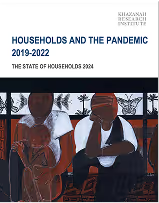
In Malaysia, women make up half of the population but only two-fifths of the workforce. As the Malaysian economy continues to grow and modernise, narrowing the gap in meaningful economic participation between men and women remains one of the key challenges that we face as a nation.
Despite the continued disparity between women and men, it should be appreciated that significant progress has taken place in recent years. In 2016, 52.8% of Malaysian women between the age of 15 to 64 were in the workforce—that is, either employed or are actively looking for jobs. For men it was 77.7%. Back in 1995, this same measure was 44.6% for women and 83.5% for men, implying the gender gap in workforce participation has narrowed by 40% in the last two decades.
The improvement in the past six years is particularly impressive. While the proportion of adult men in the workforce remained somewhat stable from 2010 to 2016, the increase in proportion of adult women entering the workforce in that time period was eight times more than the increase recorded in 14 years prior to that.
.png)
What could explain the significantly increased workforce participation of Malaysian women since 2010? As with most macro-economic phenomena, the answer most probably lies in a confluence of factors that requires in-depth studies to fully disentangle. Nevertheless, one particular trend is quite telling.
With the increased rate of participation, an additional 1.1 million Malaysian women joined the workforce between 2010 and 2016. One-third of this was due to the rise in own account workers – that is, independent or self-employed workers. Nationally, among all types of employment, this segment grew the most within the past six years by 25%, from 1.8 million to 2.3 million. The rapid rise in independent work is not unique to Malaysia, but rather a development in many advanced and developing economies in the past decade. This can be partly explained by the emergence of new technologies and business models that allow for greater work flexibility, efficiency, and opportunities for both workers and firms – such as in e-commerce, sharing economy, and digital free-lancing. What is unique in this development in Malaysia is that nearly 80% of the overall increase in own account workers since 2010 are women. Most of them are young – below the age of 35 – and almost entirely from urban areas.
Clearly, this changing landscape of work offers new economic opportunities for women—many who were previously unable to participate in the workforce can now find alternative, more flexible pathways to participate in the economy. Nevertheless, the flipside of this flexibility is the loss of stability and security associated with more traditional forms of employment. For instance, independent workers often have less access to credit, social protection and formal training due to the lack of guaranteed income and formal work arrangements. It follows then that as a larger population of workforce chooses to engage in this new form of employment, the challenge moving forward lies in ensuring that these people can do so in reasonable security.
The rise of independent work being a significant factor behind the improvement in women entering the workforce speaks volumes on one of the most important underlying reasons that hinder women from participating meaningfully in the economy – the struggle that women face in balancing work and care responsibilities. In 2016, 60% or 2.6 million Malaysian women did not join the workforce due to housework, compared to only 3% or 64,000 men. By contrast, the most common reason keeping men out of work was education (Figure 2). The flexibility inherent in independent work provides greater freedom for women to juggle both paid work and housework.
.png)
The fact that housework is disproportionately borne by women is often overlooked but it is fundamental in any discourse on women’s economic empowerment. Women, not just in Malaysia but across the world, often face higher barriers to accessing paid work compared to men not necessarily because they are less educated or qualified, but because they shoulder a disproportionate responsibility for unpaid care.
Despite the improvements made in Malaysia in recent years, further progress in enabling meaningful participation of women in the economy will not be truly possible without addressing this underlying challenge. This would involve, among others, a combination of rebalancing unpaid care work between men and women, and a greater commitment to creating more flexible working environments across all industries.












